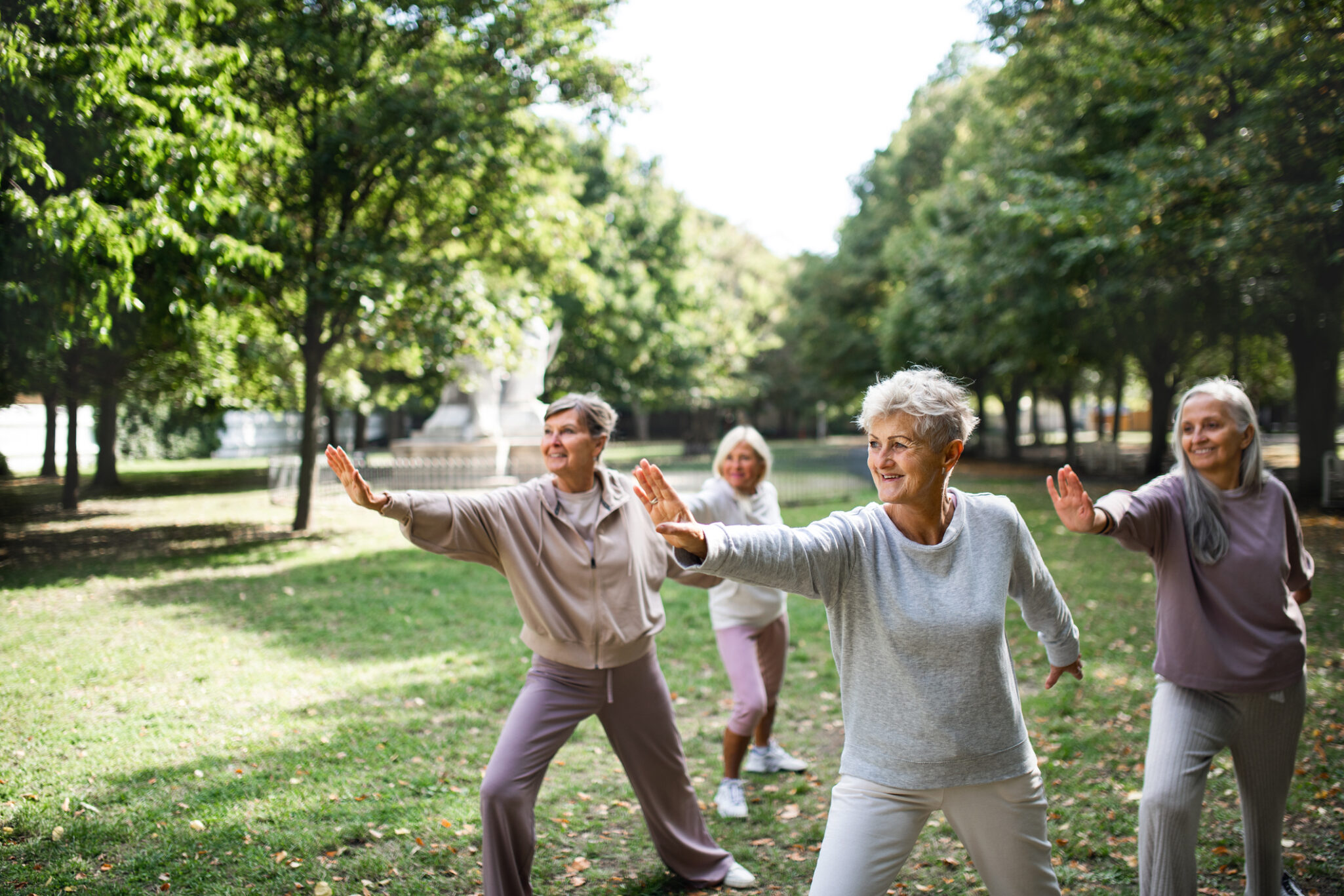
How Senior Living Austell Supports Health and Wellness for Seniors
We all aspire to live longer — but what we should truly aspire to is to live healthier, longer. And yes, there’s a big difference between living longer and living healthier for longer.
According to a recent report from the McKinsey Health Institute (MHI), people are now spending more years in poor health than at any time in human history. Global life expectancy has more than doubled between 1800 and 2017, but the proportion of people’s lives lived in poor or moderate health has remained unchanged in that time, at 50%.
It doesn’t have to be this way. If we look at what affects overall health and wellness as we age, we know we can’t control every factor, such as our genetics. But having a healthy diet, maintaining an active lifestyle, and caring for our social, mental and emotional health are all within our power. And that same MHI report showed adopting healthier lifestyles could enable all of us to enjoy at least six more years of quality life.
Let’s take a deeper look at the importance of health and wellness for older adults, along with some of the benefits of adopting a healthy lifestyle.
What is health and wellness for seniors?
This seems like an easy enough question. However, the answer isn’t so straightforward. That’s because while people tend to erroneously use the terms “health” and “wellness” interchangeably, they have very different meanings.
Health is not merely just the absence of disease or infirmity, but the state of complete physical, emotional, spiritual, intellectual and social well-being. And wellness is the way in which people become aware of, and make choices toward, a more successful existence.
In other words, health is the goal and wellness is the active process of achieving it.
What are the components of health and wellness and why are they important?
There are many dimensions of wellness — typically they include physical, emotional, social, spiritual and intellectual. Consider these five dimensions the basic wellness building blocks toward building good health.
1. Physical wellness: Keeping your body active and your muscles strong; maintaining a healthy diet; avoiding bad habits like smoking and drinking alcohol; getting at least six hours of sleep a night
2. Emotional wellness: Learning to manage life’s challenges and setbacks, understanding one’s feelings and coping with anxiety, sadness or depression
3. Social wellness: Fostering greater engagement, connection and cooperation with other older adults; cultivating support systems
4. Spiritual wellness: Maintaining a sense of hope, strength and peace
5. Intellectual wellness: Keeping the brain engaged and boosting cognitive function
We already talked about why good health is so important; wellness is important because it shapes nearly every aspect of daily life. For example, if you’re in good physical shape, you can move without pain. If you’re in good emotional health, you can better experience joy and manage grief. And this continues through social, spiritual and intellectual wellness.
What are other benefits of maintaining health and wellness?
We mentioned earlier that humans can’t control every aspect of healthy aging. But surprisingly, our lifestyle choices play a bigger role than we may think. A long-term study by the MacArthur Foundation found that 70% of physical aging and about 50% of mental aging is determined by our daily lifestyle choices.
Research on healthy aging shows that seniors who embrace wellness as part of everyday life receive significant benefits. Adopting the healthy habits of a quality wellness program for seniors can lower the risk of diabetes, cancer, obesity, arthritis, Alzheimer’s disease, high blood pressure, and mood disorders like depression and anxiety.
Arguably every older adult would want to lower their risks of those diseases and disorders. However, it may seem like a daunting task for most older adults to find a comprehensive wellness program that addresses their physical, emotional, social, spiritual and intellectual wellness.
Fortunately, that’s not something they have to do when they choose to live in a senior living community in Austell.
How does a senior living community promote health and wellness?
When an older adult becomes a resident of a quality senior living community near Atlanta, they have access to a number of on-site amenities like swimming pools, fitness centers and instructor-led classes, and personalized fitness plans. They can also enjoy nutritious meals prepared by a culinary team in beautiful dining area, continuing learning opportunities, organized trips, volunteering possibilities and much more — all with the sole focus of fostering each resident’s overall health and wellness.
Pursue better health and wellness at Presbyterian Village Austell
At our retirement community near Atlanta in Cobby County, you’ll discover a healthy and active lifestyle centered around whole-person wellness. We empower all residents through diverse, innovative programs and a full calendar of activities that let them embrace the day and live a more fulfilling, meaningful life.
Just a sampling of our wellness resources include a heated indoor pool and whirlpool, fitness center and exercise room, nutritious dining program, personalized fitness classes, volunteer opportunities, clubs and committees, and on-campus classes for continued learning.
If you’re ready to focus on your overall health and wellness, and learn more about Presbyterian Village Austell, contact us today.


